Cleaning of heating systems by different methods
Prolonged operation of the heating system does not pass without a trace for it, especially if the pipelines are made of steel pipes. With the help of preventive measures, it is possible to restore its work, which has deteriorated due to various internal layers. Independently carried out hydropneumatic, biological and chemical cleaning of heating systems.
This will restore the original cross section of pipelines and radiator sections.
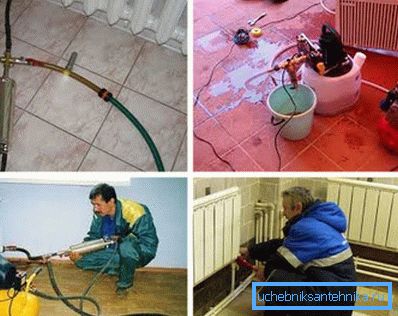
General information
Reducing the efficiency of heating is due to the silting of sections of the heating system. Especially often this occurs in places where the coolant has a low speed. The main problem is the low quality of water, which carries particles of sand and other debris deposited in pipes.
Tip: if you do not use pipes for heating systems, the inside of which is covered with a corrosion-resistant coating, mineral deposits will appear on them over time.
In standard apartment buildings it is recommended to flush the heating system once a year. In their own - the owners independently decide when it is better to do it.
Below we consider the reasons for the need to do such prevention:
- reduced heating;
- radiators heat up partially;
- near the boiler, the batteries heat better, and the far ones - worse.
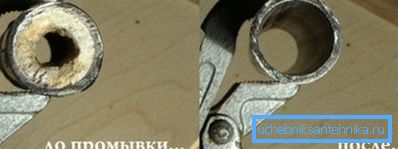
If you do not flush any parts of the system, the following may occur:
- heating devices will break or deteriorate;
- in winter, coolant may be frozen in pipelines or sections;
- financial losses will increase;
- the entire system fails;
- emergency situations will occur;
- in addition it is necessary to overpay for electricity due to poor heating of the room.
Ways
The main washing methods are:
| Chemical |
|
| Biological | Special flushing fluid is used, which is saturated with live biobacteria. The method is considered the most effective. |
| Hydropneumatic | In this case, the cleaning is done using a hydraulic pump that creates a lot of pressure. Because of this, the layers are partially destroyed and go outside. The method consists of two stages - washing and pressure testing. |
Cleaning batteries involves the use of valve taps. With their help, the flow of water is blocked, which makes it possible to clean their individual elements.
At the industrial enterprises apply electropulse washing. In this case, electric current is introduced into the system, due to which scale is separated from the walls of sections and pipelines.
Chemical method
Inexpensive, but reliable way to clean the heating system.
Its advantages:
- simplicity;
- small price;
- fast result;
- heating operation does not stop;
- high quality.
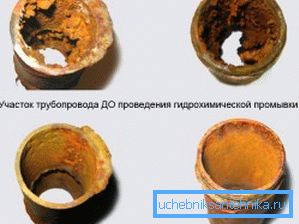
Tip: cleaning can be done in winter and summer.
Among the shortcomings should be noted:
- toxicity;
- can not be used for aluminum radiators;
- problems with the disposal of the solution after washing.
Step-by-step instructions for the flushing process:
- Examine the heating system and select the most suitable chemical agent for it.
- Dilute the chemical solution according to the instructions. They can be liquid and powdered.
- Fill the container with the solution and connect the flushing device to the pipeline.
- Start the circulation of the solution in the heating circuit. The amount of time depends on the accumulated pollution and its general condition.
- Drain the solution, wash the pipes and sections several times, then fill them with water.
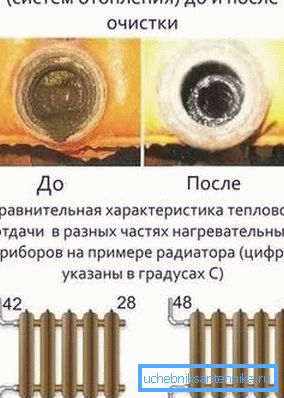
Biological method
The second name of the method is dispersed, it is an improved chemical method. In this case, the solution does not destroy the metal structure, but only contributes to the weakening of the molecular relationship between scale, dirt and the walls of the pipelines (sections).
Advantages of the method:
- it can be used in any heating systems, including aluminum;
- the solution is environmentally friendly, does not harm people and the environment;
- scum and dirt comes out in a split form, without clogging the pipe;
- After washing, a hydrophobic film appears on the inner walls, which prevents the occurrence of scale during the further operation of the system.
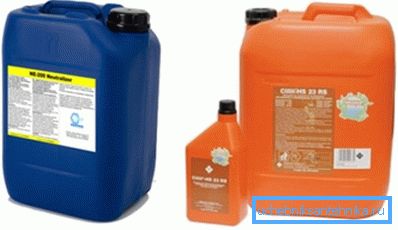
Process:
- Calculate the amount of reagent, taking into account the individual characteristics of the heating system.
- Connect and turn on the device with the circulation pump to ensure the movement of the solution.
- Rinse the pipes (sections) after the reagent has entered, and drain the solution down the drain.
Tip: in winter, prepare a heat exchanger for flushing, which will ensure that the heating circuit is closed.
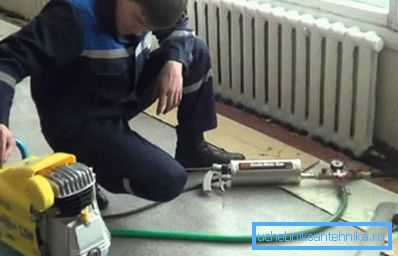
Independent flushing of the heating circuit hydropneumatic method
There are two options:
- Open the system vent valve and fill it with water.. As soon as the liquid runs out of it, turn off the tap. Begin to supply compressed air by opening the drain valve. After the mixture has passed through all the elements, drain the water. Rinse circuit until clean water appears.
- Open the air valve and fill the circuit with solution or water.. Begin to supply compressed air. After 15 minutes, stop the flow and, opening the valve, drain the water. Then you need to wash the heating circuit with running water several times.
Conclusion
Normal cross-section of pipelines and sections in the heating system is the key to the proper functioning of space heating. Several methods are used to clean it, including chemical, biological, and hydropneumatic.
Video in the article will provide an opportunity to find additional information on the above topic.